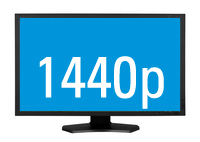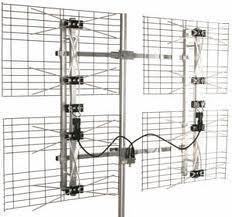As the demand for higher video quality increases, the video technologies that are available will also improve. Several video technology companies are producing televisions that are capable of showing high resolution images in the 1440p range, which is a 1440 pixel vertical resolution. So, with the standard 16:9 resolution format, a 1440p television would be capable of having a 2560 pixel horizontal resolution. This is a 77% increase in the amount of pixels in a 1080p resolution television’s image, which is a very large increase in the amount of visual data that can be displayed at a sharper image quality.
Digital compression video options make it possible to have such high quality video on different media options. These options still require a large amount of bandwidth to transfer the image from the playback device to the television. This means that better transfer methods will be necessary when working with such a high resolution – 1440p. The 1440p format is already available, but is still in its early stages so it is not widely adapted for use in normal households .
.
The most likely use for 1440p televisions would be to provide a much crisper and clearer image on larger screens. Even though larger televisions have been produced for some time, they are still limited to resolution options such as 1080i, 1080p, and 720p, which are capable of producing a clear image that are then scaled up. This causes the final picture to lose quality as single pixels are stretched over larger areas of multiple pixels.
There are some limitations to this form of extreme definition. One of the biggest concerns is bandwidth speed. If the speed of video playback is not fast enough, viewers will notice a much higher incidence of stuttering, lag, and video jumps during playback. This is increasingly multiplied by fast motion video, which causes the jittery effect to worsen as the televisions try to keep up when refreshing each pixel line in order. As the technology continues to advance, the speeds will improve and the result will be fluid motion at an extreme definition resolution.
One of the main drivers for this technology is the gaming industry. Nvidia and Dell were aiming to use extreme high definition resolutions to create gaming experiences that offered more than standard resolutions of the time in the year 2006. The maximum resolution with extreme high definition was designed to reach 2560×1600, with variants at 1920×1200 and 1680×1050.
The solution for television applications was to create an extreme definition at 1440p at 2560×1440 pixels. Both extreme definition and extreme high definition are capable of having 2560 horizontal pixels, but are different in the vertical resolution.
Devices that are capable of extreme definition resolutions are currently the Apple 27″ iMac and the Dell 27″ 1440 display. The number of devices supporting this format is increasing and several different companies, such as NEC, are developing it.
HDMI cables and specialized splitters have been developed to work with 1440p signals. The HDMI 1.3 signal is compatible with the 1440p signal and provides the full spectrum of sound while providing adequate bandwidth for video rendering. Before these types of cables were available, the only way to get the 1440p signal was to use 2 sets of dual DVI ports with specialized video graphics cards designed to output the resolution. Support for Deep Color 30-bit, 36-bit, and 48-bit (RGB or YCbCr 4:4:4) color depths is available, which is a much larger increase compared to HDMI’s version 1.2. The increase in colors jumps from millions to billions. Smooth tonal transitions and subtle gradations for color possibilities increase the lifelike image. The increased contrast ratio of this format allows deep color displays to exhibit more shades of gray between black and white.
Commercially available motion camera capture devices are yet to offer an option that is capable of capturing a source resolution of 1440p. Scaling up the capture from 720p, 1080i, and 1080p sources to the higher resolution of 1440p is beneficial for large televisions. Several companies are capable of creating video capture devices that far exceed 1440p, but they do not because such devices are not yet feasible to market to the general public. Once a suitable and low priced opportunity arrives, high end resolution video cameras will be available to shoot extreme high definition video.
The 1440p is not to be confused with 2160p, which is capable of rendering 3840×2160 pixel video and images or ultra high definition video format (4320p), which can render 7680x4320p lifelike video. The ultra high definition format is also being challenged by the several innovations in video display technology from the many hardware developers and manufacturers.




Follow Us!